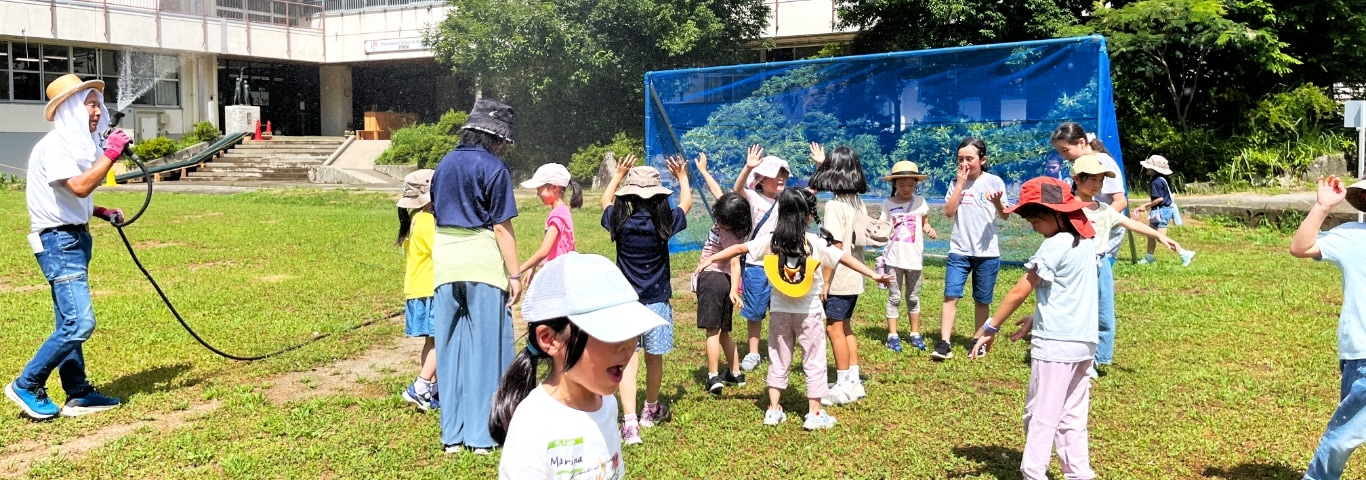ISNプレスクールの英語の習得の時間(stand alone/単科)では使用度の高い発音や文字から、子ども達は英語という文字に触れていきます。
フォニックスは文字を見て聞いて、その文字がどう発音され書かれるか、サウンドと文字をリンクする活動です。
文字にはVowels とConsonants があり、使用度の高い文字の順番に子ども達に文字の第一サウンドを紹介します。その後に、第2サウンド、第3サウンド…に移ります。使用度の高い文字は例えばs,a,t,i,p,n,l等。
“a”のphonogramのシンボルだけで1. fat 2. baby 3. bath 4. all 5.washと5通りのサウンドがあります(場合によって6通り)。2. babyのサウンドを見てaと同じサウンドは、a, ai, ay, ea, ey, ei, eighがあります。例えば上記aiのシンボルを(文字)を使ってsail, tail, aid, snail, wait…なんて風に遊びながらシステムを学び、ボキャブラリーを増やしていきます。他には、Short vowel sound、Long vowel soundを紹介、 Vowel-Consonant の文字、例:-at, -an, -it, and -in と、文字を作ります。-itならsit, pit, kit, fit, wit, lit… 面白いですねー 🙂
2文字以上の使用度の高いサウンド(multiple phonograms)。er, ir, ur, ear, wor, th, sh, ee, ay, ai…沢山あります。子ども達は先生とRAZをはじめとする本の中から学んだサウンド探しをしたり(audio learning)、新しく出てきた単語は壁にはられたり(visual learning)ノートに練習したり(visual/kinetic learning)、カードを使ってゲームをしたり(kinetic learning)、サウンドを会話や歌で(audio learning)楽しみながら使い自然に身につけます。
大掛かりに聞こえるようなシステムですが、楽しいゲームや歌のフォニックスの活動作業をしておくと、後にもっと複雑なリーディングやライティングへの移行がよりスムーズになります。フォニックスのやり方にも、沢山の理論があり、それぞれの良いとこどりをした、ISNに合ったコロンビア大学のTeachers collegeがベースとなったシステムを、2019年度からプレスクール全体に導入しようと計画しています! 🙂
ISNでは先生達の素晴らしい知識経験に加え、更なるアプローチの紹介もすることで、”ISNの生徒にとって一番の方法”の研究を続けます。それは生徒との毎日のやり取りの中から発見されていきます。
**********
In ISN preschool’s stand alone English lesson time, the students will learn English pronunciation and English characters. Phonics is an activity of recognizing the letters, linking sounds and letters and studying how the letters are written and pronounced.
The are two types of letters: vowels and consonants. First, we introduce the sounds of the letters in order of frequency. First, we introduce the letters we use and sounds we hear very often, like s, a, t, i, p, n, l etc. After that, we move on to second most frequent letters and sounds, then on to third most frequent letters and sounds and so on.
Only looking at the “A” phonogram, we have five (in some cases 6) different sounds that symbol makes: 1. fat, 2. baby, 3. bath, 4. all, 5. wash. If we look at the “A” in “baby”, there are other combinations of symbols in other words that make the sound, such as ai, ay, ea, ey, ei and eigh. Then again, “ai” is found in sail, tail, snail, aid, wait,… Practicing all these words, the students increase their vocabulary. When we introduce short vowel sounds, long vowel sounds and vowel-consonant combinations as well, the students keep learning more and more.
After that, they can move onto multiple phonograms, such as er, ir, ur, ear, wor, th, sh, ee, ay, ai and so on. The students are reading RAZ books and are searching for sounds they have read (audio learning), looking at new vocabulary (visual learning), practicing writing the newly learnt vocabulary (visual and kinetic learning), making card games with the new words and playing them (kinetic learning), listening to songs and having conversations (audio learning).
Although this does sound like a large scale system, its fun activities like games and songs make the transition to more complicated reading writing smoother. From 2019, ISN plans to introduce a wide phonics plan, based on the teachings of Columbia University’s education department, to the whole preschool.
At ISN, adding on to our teachers’ wonderful knowledge and experience, we will continue researching into the approaches that are best for our students. We discover new approaches every day, through our interactions with the students. 🙂

